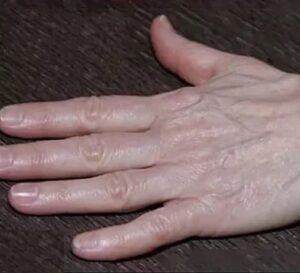skin infections
What are skin infections?
 Your skin is the largest organ of your body. Its function is to protect your body from infection. Sometimes the skin itself becomes infected. Skin infections are caused by a wide variety of germs, and symptoms can vary from mild to serious. Mild infections may be treatable with over-the-counter medications and home remedies, whereas other infections may require medical attention. Read on to learn more about skin infections and what to do if you have one.
Your skin is the largest organ of your body. Its function is to protect your body from infection. Sometimes the skin itself becomes infected. Skin infections are caused by a wide variety of germs, and symptoms can vary from mild to serious. Mild infections may be treatable with over-the-counter medications and home remedies, whereas other infections may require medical attention. Read on to learn more about skin infections and what to do if you have one.
SIGNS AND SYMPTOMS of skin infections
The symptoms of a skin infection also vary depending on the type. Common symptoms include redness of the skin and a rash. You may also experience other symptoms, such as itching, pain, and tenderness.
See a doctor if you have pus-filled blisters or a skin infection that doesn’t improve or gets progressively worse. Skin infections can spread beyond the skin and into the bloodstream. When this happens it can become life-threatening.
Signs of a severe infection include:
- pus
- blisters
- skin sloughing, breakdown
- dark, necrotic-appearing skin, or skin that becomes discolored and painful
CAUSES AND TRIGGERS of skin infections
The cause of a skin infection depends on the type of infection.
Bacterial skin infection: This occurs when bacteria enter the body through a break in the skin, such as a cut or a scratch. Getting a cut or scratch doesn’t necessarily mean you’ll develop a skin infection, but it does increase your risk if you have a weakened immune system.
A decreased immune system can be the result of an illness or the side effect of medication.
Viral skin infection: The most common viruses come from one of three groups of viruses: poxvirus, human papillomavirus, and herpes virus.
Fungal infection: Body chemistry and lifestyle can increase the risk of a fungal infection. For example, you may experience multiple bouts of athlete’s foot if you’re a runner or if you sweat a lot. Fungi often grow in warm, moist environments. Wearing sweaty or wet clothes is a risk factor for skin infections. A break or cut in the skin may allow bacteria to get into the deeper layers of the skin.
Parasitic skin infection: Tiny insects or organisms burrowing underneath your skin and laying eggs can cause a parasitic skin infection.
Types of Skin infections
Bacterial skin infections
Bacterial skin infections appear as insignificant lumps or bumps that gradually increase over time. These infections usually attack through a break in the skin such as a small cut or scratch. The risk of infection is multiplied in people with a weak immune system, sometimes caused by an unrelated illness or medication side effects. There are many bacterial infection varieties that are easily treated with topical antibiotics, while other infections respond well to oral antibiotics.
Bacterial skin infection types include:
- Cellulitis – inflammation of cellular tissue
- Boils – a painful circular and raised skin inflammation
- Impetigo – a contagious skin disease, usually the result of streptococcal bacterial infection
- Leprosy – a chronic infection affecting the nervous system and skin, characterised by ulcerations, nodules and a loss of sensation in limbs or other parts of the body
The enzyme peel is our most superficial and softest chemical peel available. While you may experiencing tingling or itching during the treatment, most discomfort will fade post treatment. Any redness can be covered with mineral makeup.
Viral skin infections
Viral skin infections are the result of a contagious virus, with symptoms ranging from mild to severe. Common viral skin infections are usually the result of poxvirus, papillomavirus or herpes.
Viral skin infections include:
- Herpes zoster, also known as shingles -is a localised, blistering and painful rash caused by reactivation of varicella zoster virus (VZV). It is characterised by dermatomal distribution, ie the blisters are confined to the cutaneous distribution of one or two adjacent sensory nerves which can be itchy and painful.
- Chickenpox – very common in children, with symptoms including extremely itchy blisters, headache and fever
- Measles – occurring mostly in children which is preceded by a prodromal period fever, malaise and loss of appetite, followed by conjunctivitis (red eyes), cough and coryza (blocked or runny nose 0 with white-blue spots in the buccal mucosa followed by non-itchy rash begins on face and behind the ears. Within 24–36 hours it spreads to the entire trunk and extremities (palms and soles rarely involved).
- characterised by red spots erupting on the body
- Warts – usually small and elevated, there are dozens of common wart varieties
- Molluscum contagiosum – small, raised lesions usually found in clusters
- Hand, foot, and mouth disease – flat, discoloured bumps or spots usually appearing on hands, feet, or around the mouth
Due to it’s melanin formation reducing properties, those wanting to reduce or harmonise skin pigmentation are recommended to use the lactic acid peel.
Depending on your skin sensitivity, some clients may experience redness for 3-5 days and a feeling of skin tightness similar to sunburn. It is recommmended to avoid direct sunlight for up to two weeks and the use of serums for 3-5 days post treatment.
Fungal skin infections
As with any fungus, these infections generally require a damp environment to flourish. The feet , groin, under the breasts, abdominal folds in obese patients and armpits are typical body regions where fungal infections can strike. A person’s individual body chemistry along with lifestyle choices can increase the risk of fungal infection. Fungi thrives where it is warm and moist, most noticeable in athletes or hot, humid environments where sweating is profuse.
Fungal infections include:
- Ringworm – noticed as ring-shaped skin eruptions and caused by parasitic fungi
- Athlete’s foot – affecting any part of the foot and characterised by scaling, cracking and redness
- Nail fungus – toenails and fingernails become discoloured and brittle, sometimes breaking off altogether
- Oral thrush – a fungal infection of the mouth, usually successfully treated with anti-fungal medication
We have both 20 and 30 percent salicylic acid available.
Most store bought salicylic products may be of a lower quality and percentage than the clinical brands we keep in stock. Our peel treatments are also accompanied by an entire facial treatment from cleansing to aftercare so that your skin receives everything it needs with no effort on your part.
Your skin may feel a stinging sensation during treatment which should disappate once the peel is neutralised and removed. Some redness and flaking may occur for a few days post treatment which is completely normal. Avoid direct sun exposure and the use of any harsh cleansers or fragrances.
Bacterial Infection
A bacterial infection occurs when bacteria enter the body, increase in number, and cause a reaction in the body. Bacteria can enter the body through an opening in your skin, such as a cut or a surgical wound, or through your airway and cause infections like bacterial pneumonia.
We have both 20 and 30 percent salicylic acid available.
Most store bought salicylic products may be of a lower quality and percentage than the clinical brands we keep in stock. Our peel treatments are also accompanied by an entire facial treatment from cleansing to aftercare so that your skin receives everything it needs with no effort on your part.
Your skin may feel a stinging sensation during treatment which should disappate once the peel is neutralised and removed. Some redness and flaking may occur for a few days post treatment which is completely normal. Avoid direct sun exposure and the use of any harsh cleansers or fragrances.
Before and after photos of Chemical Peel




want to
talk with us?
Treatment of skin infections will be determined by the infection type and your dermatologist will diagnose accurately and treat accordingly depending on the condition.
